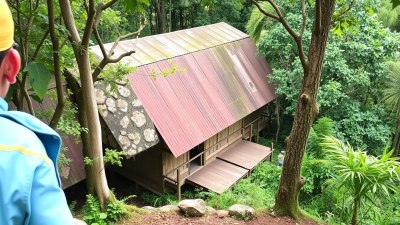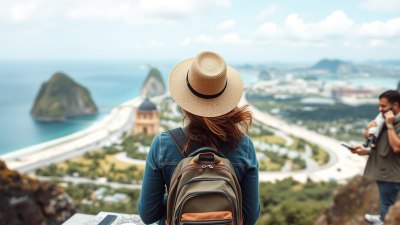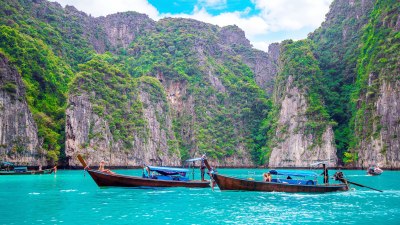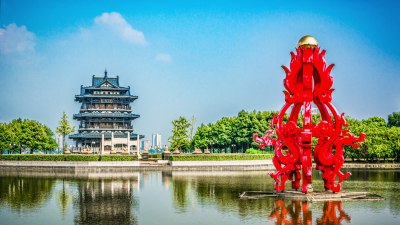Finding the Real Road to El Dorado in Colombia
Explore the mythical journey to El Dorado, uncovering Colombia's hidden treasures and rich history.

The legend of El Dorado, the fabled city of gold, has captivated explorers and adventurers for centuries. This tale, originating in the indigenous cultures of South America, primarily the Muisca tribe of Colombia, has evolved through time, leading many on quests for riches and glory. As we delve into the intricacies of this myth, we unearth the roads leading to El Dorado, both literally and metaphorically, exploring Colombia’s vibrant history, fascinating landscapes, and the intriguing narratives that surround this legendary quest.
Historically, the term 'El Dorado' refers to a chieftain who was said to cover himself in gold dust and then dive into Lake Guatavita, offering gold and treasures to the gods. However, as expeditions continued into the heart of Colombia, the vision of El Dorado transformed into an entire city overflowing with gold. The true journey to this mythical city extends beyond mere wealth, revealing a profound exploration of culture, spirituality, and humanity.
The Historical Context of El Dorado
Understanding the legend requires delving into the rich and tumultuous history of Colombia before the arrival of the Spaniards. The Muisca were part of the Chibchan linguistic family and inhabited the Altiplano Cundiboyacense, characterized by high plateaus and a diverse ecology. The Muisca were skilled in metallurgy, jewelry crafting, and agriculture, laying the groundwork for the stories that would capture the imaginations of conquerors, including Gonzalo Jiménez de Quesada. The Spaniard's arrival in the 16th century marked the beginning of a devastating transformation for the indigenous populations and the landscape of Colombia.
Jiménez de Quesada, in his relentless pursuit for glory and riches, stumbled upon the Muisca's rich traditions and stories surrounding El Dorado. His treks across the Andes served as a catalyst for future explorations, showcasing the potential of Colombia’s interior yet simultaneously leading to the exploitation of its native peoples and resources.
Journey into the Andes: The Beginning of El Dorado Expeditions
The expeditions to uncover El Dorado primarily began after the Spanish conquest of the Muisca territory. The allure of endless treasure spurred countless adventures into the high Andes of Colombia. Adventurers like Sebastián de Belalcázar and Francisco de Orellana pushed further into the jungles and mountains, mapping unexplored territories in search of the elusive city. Unfortunately, they encountered harsh environments, treacherous terrains, and fierce indigenous resistance, which resulted in significant loss of life.
Each expedition brought back stories that added to the mythos of El Dorado, vividly detailing mountains of gold and extraordinary wealth. Over time, the tales reached Europe, where they generated waves of interest and sent more fortune-seekers on dangerous journeys into the unknown. Expeditions continued for centuries, with notable figures such as Sir Walter Raleigh in the late 16th century articulating their pursuits through literature and dramatization, further embedding the myth into the cultural fabric of the era.
Lake Guatavita: The Heart of the Legend
One cannot discuss El Dorado without acknowledging Lake Guatavita, a haunting site located just north of Bogotá. Traditionally viewed as sacred by the Muisca people, the lake is entwined with the mythology surrounding the gold-covered chieftain. Today, it stands as a geographical and metaphysical representation of the stories and ambitions tied to El Dorado.
Various archaeological explorations have taken place at Lake Guatavita, particularly by the Spanish who sought to drain the lake to recover treasures believed to reside in its depths. However, these attempts have often proved fruitless yet have contributed to the legend's enduring allure. The lake remains a popular destination for tourists and historians alike, offering stunning views and a glimpse into the past, inviting contemplation about the lengths to which humans will go in pursuit of dreams and ambitions.
Cultural Reflections of El Dorado in Modern Colombia
Today, El Dorado has transformed into a metaphorical journey representing the quest for self-discovery and exploration of one’s dreams, unbound by physical riches. In Colombia, El Dorado symbolizes hope, resilience, and the endless pursuit of aspirations despite historical injustices. Colombian art, literature, and music reflect the national identity intertwined with folklore and myth, presenting a complex yet rich tapestry of culture influenced by both indigenous and Spanish heritage.
Many authors, such as Gabriel García Márquez, have drawn from the theme of El Dorado in their works, intertwining it with elements of magical realism that highlight the ever-present juxtaposition between reality and the fantastical. Furthermore, Colombia’s vibrant festivals and traditions embrace the narrative of El Dorado, celebrating indigenous roots while acknowledging the nation’s journey towards modernity and self-acceptance.
The Roads Less Traveled: Ecotourism and Adventure
In recent years, Colombia has embraced ecotourism, with various trails and paths leading visitors into the breathtaking Andes and jungles where explorers once sought El Dorado. Among the most notable is the Ciudad Perdida trek in the Sierra Nevada de Santa Marta, an ancient archaeological site believed to have been built by the Tairona civilization. This path offers tourists not just a physical journey, but a spiritual one, where they can experience the harmony of nature and the remnants of indigenous cultures.
Adventurers are now drawn to Colombia not just for the myths of gold but for the richness of biodiversity, stunning landscapes, and the warmth of its people. The roads to El Dorado may remain elusive, but the journey into Colombia’s heart unveils treasures of another kind—community, culture, and connection to nature. Traveling through Colombia allows individuals to explore their paths, echoing the quests of adventurers long past.
Preserving the Legacy: Anthropology and Education
Today, education about the historic and cultural significance of El Dorado continues through anthropological works, museums, and cultural preservation efforts. Institutions in Colombia strive to embrace the narratives of indigenous peoples, ensuring that their stories are not lost to history. Workshops and educational programs encourage awareness of Colombia's diverse heritage, fostering respect and understanding among different cultures.
Museums such as the Gold Museum in Bogotá serve as informative hubs that celebrate pre-Columbian artifacts and the skilled craftsmanship of various indigenous groups. By showcasing the beauty and skill inherent in these creations, they challenge the notion of wealth as mere gold and instead celebrate the value of cultural richness.
The Legacy of El Dorado: Reflections and Future Aspirations
The legend of El Dorado remains alive, continually evolving as it intertwines with Colombia’s journey and identity. As Colombia progresses toward reconciliation and modernity, the legacy of El Dorado serves as a reminder of both the allure of the past and the importance of embracing history to build a brighter future. The roads to El Dorado may not deliver gold, but they lead to wisdom, understanding, and a nuanced appreciation of humanity’s shared aspirations.
Moreover, this story serves as an invitation to explore both the landscapes and the vast stories they hold. Colombia is a land of contrasts—from the heights of the Andes to the lushness of the Amazon and the vibrant cities filled with warmth. The quest for El Dorado, whether real or mythical, invites individuals to confront their pursuits, catalyzing a narrative of growth and understanding that transcends the quest for material gain.
As we reflect on the legacy of El Dorado, we become part of an ongoing dialogue steeped in history, myths, and aspirations. The true road to El Dorado lies in the connections we forge, the knowledge we seek, and the stories we share, resonating with past explorers while illuminating pathways for future generations.











